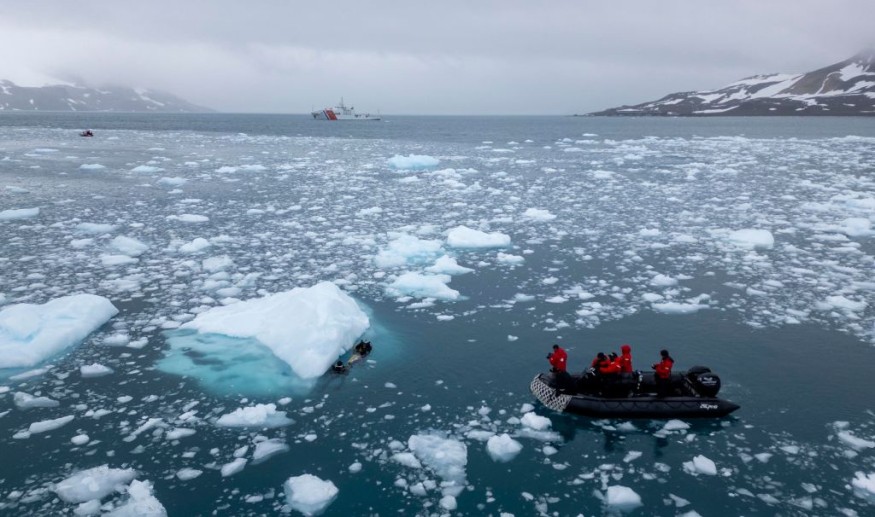
Due to climate change, scientists saw record-low sea ice levels in the Antarctic last year.
The British Antarctic Survey (BAS) found that due to human-caused global warming, the ocean surface that encircles the ice-covered continent reached a once-in-2,000-year low.
Unlikely To Recover
The largest area of the Antarctic sea covered by ice shrank to four times the size of France, or two million square kilometers, compared to a typical winter over the preceding few decades, the study found.
After analyzing 18 distinct climate models, scientists found that the likelihood of such large-scale and rapid melting events was tripled by climate change.
Sea ice melt, they contend, can be caused by a multitude of variables, such as winds, air temperature, and ocean water, making it challenging to identify the precise cause of the event.
However, understanding how climate change influences ice production is important because it impacts everything from global sea level rise to ocean currents.
Sea levels are not significantly affected by sea ice, which is formed by freezing salt water that is already in the ocean. However, the same quantity of solar radiation that was reflected back into space is absorbed by water as highly reflecting snow and ice give way to a dark blue ocean, quickening the rate of global warming.
The Antarctic melt trend is a relatively recent phenomenon compared to the Arctic, where sea ice has been decreasing since satellite records were first made in the 1970s.
According to the BAS, Antarctic sea ice rose "slightly and steadily" between 1978 and 2015.
The year 2017 witnessed a notable decline, which was succeeded by multiple years of reduced ice levels.
The BAS researchers also performed forecasts to determine whether the ice would reappear.
"It doesn't completely recover to its original levels even after 20 years," said the study's lead author, Rachel Diamond. He continued, saying that this suggests "the average Antarctic sea ice may still stay relatively low for decades to come."
Impact Of Antarctic Sea Ice
Understanding why 2023 was such a record-breaking year is difficult because Antarctic sea ice is influenced by a wide range of intricate and interrelated factors.
Recent studies have underlined the critical significance of ocean processes and heat trapped below the surface, and rising sea surface temperatures during the first half of 2023 may also have contributed. Significant differences in storm systems and winds from north to south also contributed.
Understanding Antarctic sea ice is essential to comprehending climate change in general. Ocean currents are accelerated, and weather patterns are influenced by sea ice formation surrounding the Antarctic. It also reduces Antarctica's contribution to sea level rise by blocking waves from reaching the exposed ice shelf borders.
Scientists have recently witnessed the devastating breeding failures of emperor penguin colonies due to low sea ice, demonstrating the critical importance of sea ice for marine life.
"The impacts of Antarctic sea ice staying low for over 20 years would be profound, including on local and global weather and on unique Southern Ocean ecosystems-including whales and penguins," said Louise Sime, a co-author on the study.
Related Article : Antarctic Waters are Now Warmer with Higher Acidity and Less Oxygen
© 2025 NatureWorldNews.com All rights reserved. Do not reproduce without permission.





